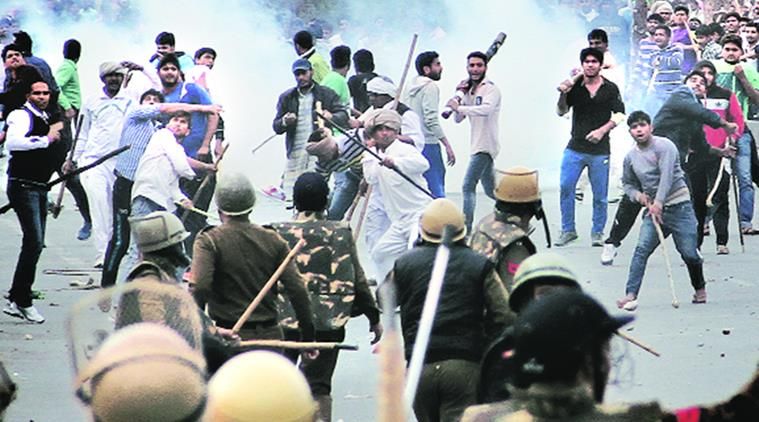Haryana Jat Stir for Jobs Cuts Into Propaganda of 'Nationalism'
The Jat stir that has paralysed Haryana is perhaps one of the most important developments in recent months. The violence is of course, one aspect of the stir but the reasons that provoked the largely young people of the state to come out in protest---the Jats when they protest are traditionally violent---and challenge the Army at a time when the BJP/RSS was seeking to push economic disaffection under the carpet with ‘nationalist’ slogans centred around JNU of course, sends out a significant and important message.
The demand for reservation is basically a demand for jobs and education. A statement from disaffected groups, be it the Jats in Haryana, the Patels in Gujarat or the Kapus in Andhra Pradesh, that they want reservation as that is the only way they can get education and employment. It is a clear sign of an economy breaking down, of growing frustration and lawlessness amongst unemployed youth that is watching the world pass them by, with the violence intended to make the government that has fallen silent after a hectic Lok Sabha campaign promising the moon, hear and respond.
The Haryana Jats took to the streets just as the national versus anti-national polarisation by the right wing was at its peak. And the stakeholders, including the media, were high on the belief that finally the slogan was working to split society with the choice defined by the limited intellect, being made inevitable. This strong campaign should have had an impact on Haryana where the Jats have been often veered to the right in their responses to issues as the state runs into Delhi, with Gurgaon being common to both in the National Capital Region. Instead, the Jats disregarded the campaign and made it clear through the stir that is still on, that for them employment was the real concern. And this is the voice that can be expected to rise from all quarters as the economy slows down, and the government’s energy moves into battling students instead of addressing the real issues concerning their future.
The New York Times has warned that the current unrest will impact on investor confidence in India. The violence on the streets, and the highly uncertain political atmosphere in the national capital is sufficient to drive away potential investors, and raise doubts about the financial soundness of doing business with India. Pressure is also building in Universities abroad, with the Ivy League colleges in the U.S. joining others from across the world to protest against the government’s efforts to stifle dissent in India. In today’s world the international voice cannot be ignored, with even the US Ambassador to India having to refer just yesterday to the need for free space and debate in University campuses as the hallmark of true democracy.
A second reason for which Haryana becomes important is to show the double standards deployed by the government in tackling two different, and yet similar situations. In Haryana the Jats smashed government residences and vehicles, they dug up national highways and blocked traffic, looted the Rohtak armoury, and laid siege to the water lifeline for Delhi. Activities that could fall under the scope of the law of sedition that successive governments of India should have abolished but of course did not. Instead the government has rushed to make peace, assured the Jats that their demand for quota will be met, and appointed a committee to look into the entire issue.
In sharp contrast, just for thinking and raising slogans that have not been even proven inside a university campus that has always held the flag of debate and dissent high, charges of sedition have been slapped against young students. The police stormed in as if the campus was in enemy territory, combed the buildings, and dragged out students for what the government and its political organisations have since been projecting as sedition. Reputed lawyers, one of them who was also with the BJP Soli Sorabji and Fali Nariman and a host of others have pointed out that slogans do not amount to sedition but the government is still sticking to the senseless charge.
Clearly sedition is like most draconian laws, a political weapon. To be used without reason, and without even a case. The logic of its application, of course, is known only to those who sit in power and treat university campuses as battling grounds.





